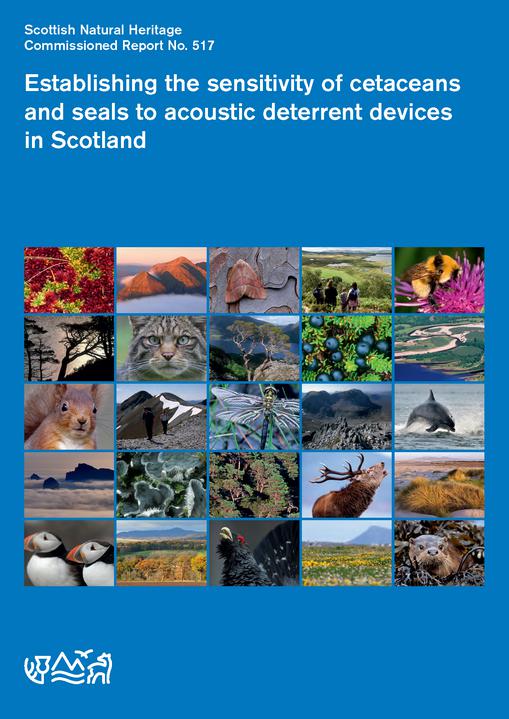NatureScot Commissioned Report 517: Establishing the sensitivity of cetaceans and seals to acoustic deterrent devices in Scotland

Acoustic Deterrent Devices (ADDs) are often used on aquaculture sites to reduce predation of seals on fish stocks using acoustic emissions. These acoustic emissions may also have secondary effects on marine mammals (including non-target species) ranging from physical injury, behavioural response and reduced sensory capability. The project investigated the effects of water depth, seabed sediment type and bathymetry on the sound propagation and received levels of ADDs. A generalised propagation model was developed to allow the prediction of received levels, and ranges where given SEL (Sound exposure level) thresholds were exceeded for various ADD models. Variant parameters included number of devices, duty cycle and the influencing factors of local environments, sediment types, the functional hearing capabilities of seals and cetaceans and simplistic assumptions about animal movements. The research highlighted a number of knowledge gaps and caveats associated with the models produced and interpretation of outputs.
Pages: 121
Published: 2014
NatureScot Commissioned Report 517
Disclaimer: Scottish Natural Heritage (SNH) has changed its name to NatureScot as of the 24th August 2020.
At the time of publishing, this document may still refer to Scottish Natural Heritage (SNH) and include the original branding. It may also contain broken links to the old domain.
If you have any issues accessing this document please contact us via our feedback form.




